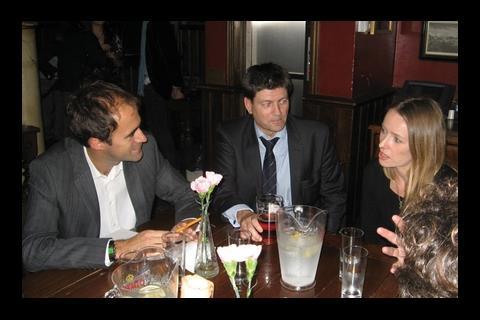Get a predominantly male crowd of people together in a pub, not all of whom know each other, and chances are they’ll end up talking about sport. In this case: motor racing
We meet in the week after Jenson Button’s crowning as F1 world champion, and the WGI crowd are very excited. Jon, more than most, because he has actually raced against Button. Stig, as he is affectionately known in the office, was on TV last year on a programme to find the best saloon car racers from members of the public, getting down to the last 12 from 4,000 entrants. “At one stage it was a serious choice between architecture and racing,” he says.
So why did he give it up? “I discovered this [points to beer] and them [points to female colleague Oana, who clearly, for these purposes, represents All Womankind]. That’s why it never happened.”
This provokes much hilarity as well as suggestions that Stig may not be a wholly reconstructed new man – “you’ll be a building site hero for that comment”.
Oana doesn’t look like she was enjoying talking about motor racing that much. Born and brought up in communist Romania, she is more interested in talking about why people on the Tube have such bad manners.
In Romania, developers had to build a nuclear bunker with every development over 600m2
Still, despite Oana’s protestations, the conversation drifts back to sport. Richard, it turns out, is a keen lacrosse fan and used to play while growing up in New England, a fact that provokes some amusement given its reputation as a girl’s school recreation this side of the Atlantic. “No I didn’t do it to wear a dress,” he clarifies, to some titters.
Finally, however, talk drifts on to the state of the market. WGI is doing alright, just suffering like everyone. Alistair says: “There are lots of enquiries but it’s about getting projects across the line. Lots of clients are holding firm till May, waiting for the election.”
I’m keen to find out from Oana how working in the UK compares to Romania, where she trained. As far as I ascertain, the main difference is in the number of atomic bomb shelters you have to build. She says government regulations meant developers had to build a nuclear bunker with every development over 600m2 – the Romanian version of the UK’s social housing obligation. “It’s what happens when you don’t really have much of an army,” she explains. “You defend by hiding.”
Maybe this is some advice the rest of the industry can take on board to get us to the other side of the election …






























No comments yet